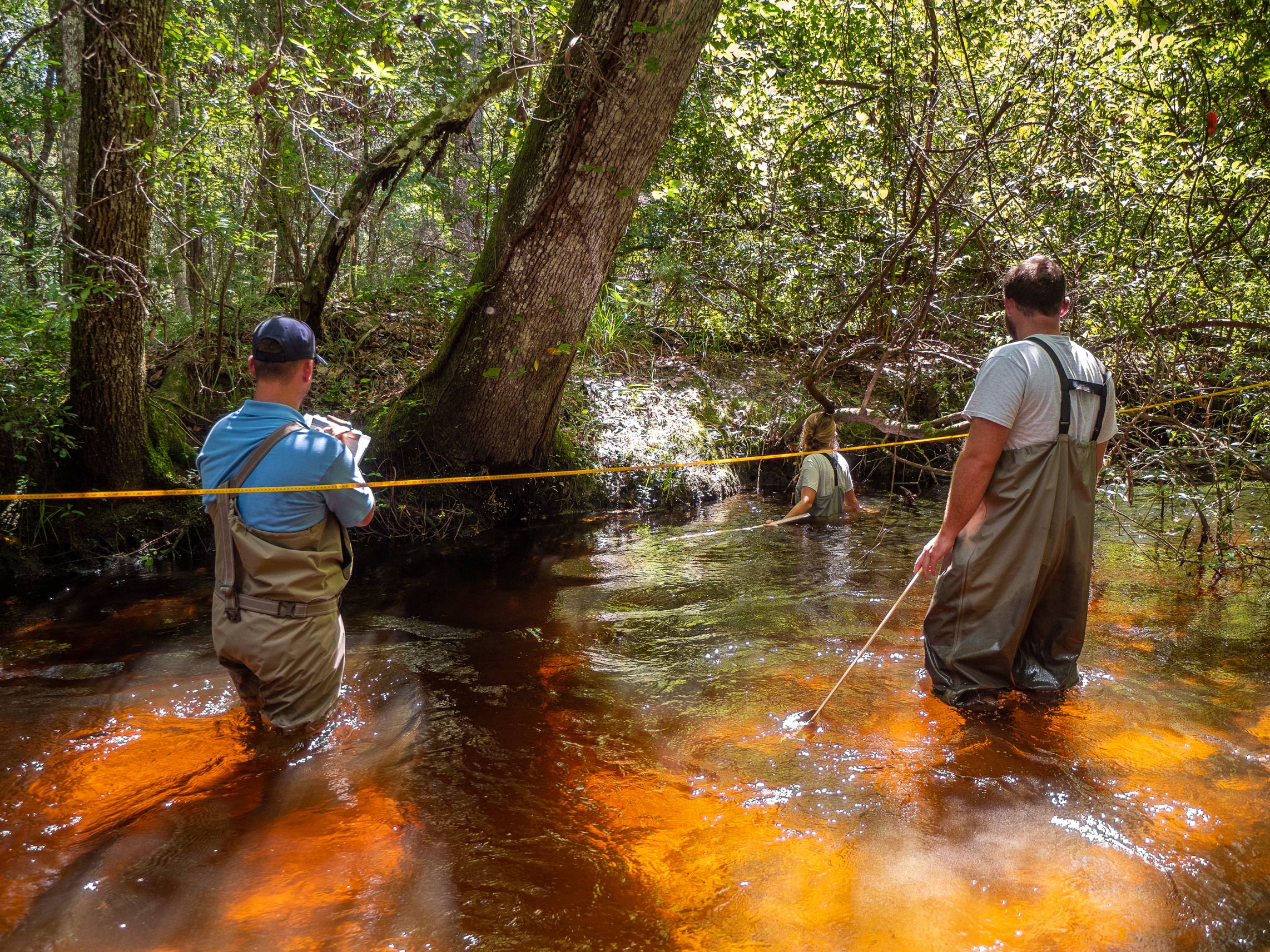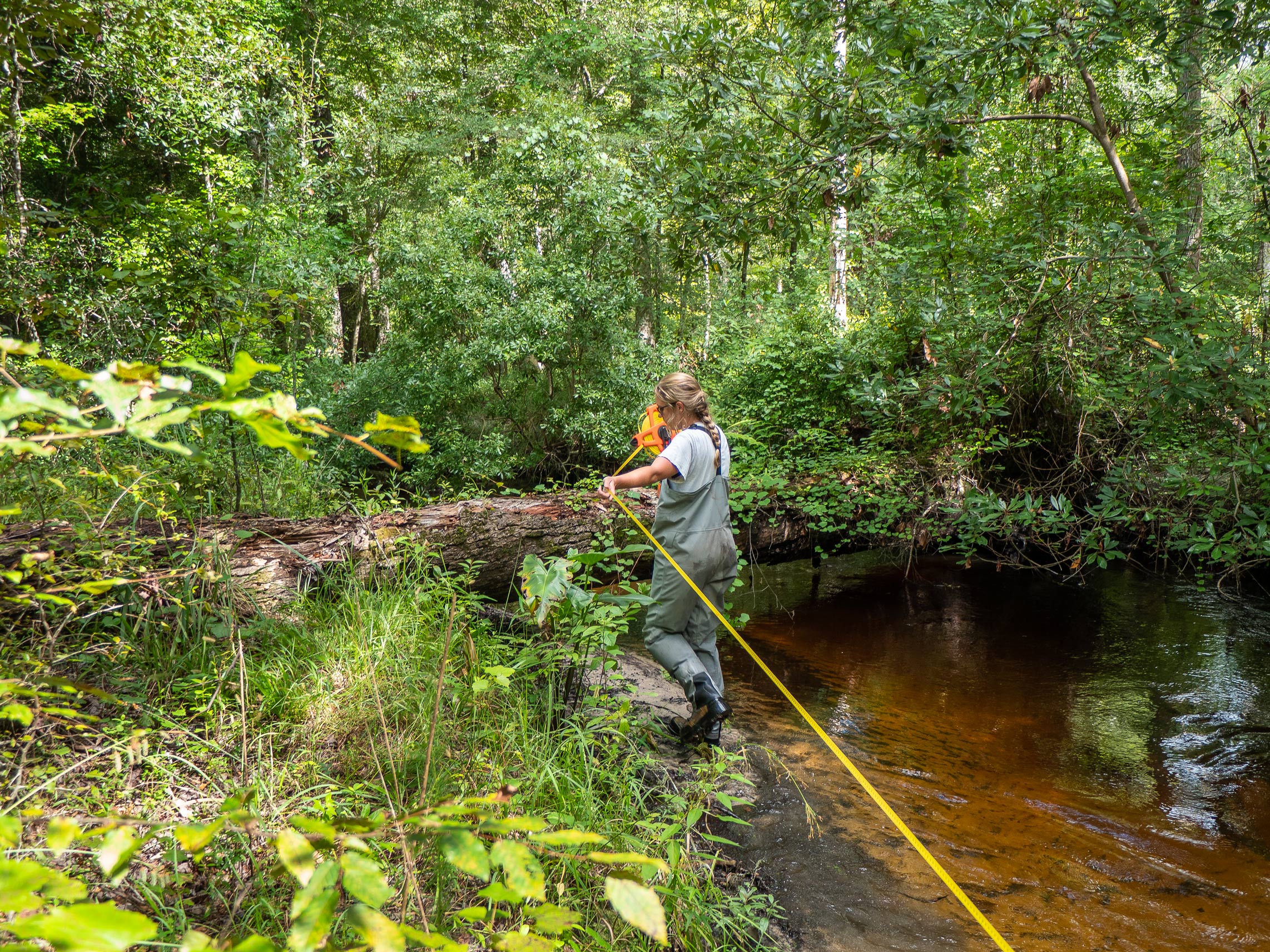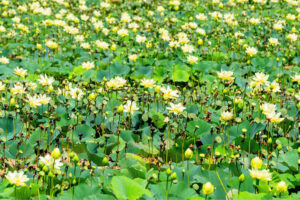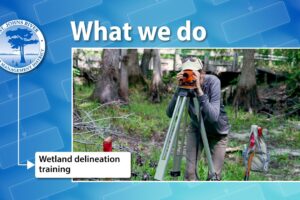For Erin Tice, an Environmental Scientist at the St. Johns River Water Management District, dressing for work means donning waders and grabbing her tape measure. She’s part of a team that surveys streams throughout Florida, gathering data that eventually reaches Congress.
Florida is a land shaped by water — literally. Not only is the coastline shaped by the ebb and flow of the ocean, nearly 51 inches of rain falls annually in Florida (that’s four feet and three inches!) and collects in the thousands of marshes, swamps and lakes sprinkled throughout its interior. The water will eventually seep into the aquifers to emerge again in one of Florida’s natural springs. It then fills streams that converge to form rivers that drain to the ocean.
All this water supports a diverse range of wildlife: from microscopic mites to manatees, the winged and the swimsuit-wearing — the quality of the water matters.
Tice and her teammates wade through a cool stream in a shady bottomland of maple, cypress and the occasional loblolly pine. They collect water samples and record temperature, pH, dissolved oxygen and velocity data. All essential data points that will eventually help scientists determine the status of the water quality in each stream.
Collecting data is a sensory experience for this crew — they reach under logs to feel for leaves packed against branches, then calculate the volume. They count the number and rate the quality of stream-bound roots, snags and aquatic plants — anything that counts as habitat. There’s even some artistry in their work. They draw a profile of the stream bed and map the sinuosity — curviness — of the stream. They check for erosion along the banks and identify plants in the riparian zone. As they walk along the stream bed, they might sink into the sandy bottom — that’s evidence of smothering (when sand settles on the leaf bed lining the stream and covers the habitat for stream-dwelling insects). They are taking an intensive look at habitat quantity and quality in a 100-meter section of the headwaters of Black Creek in the middle of a forest in north Florida.
They’ll repeat this a few times in different streams over the next few months. It’s all part of the Florida Department of Environmental Protection’s (DEP) statewide Water Quality Status Monitoring project.
“It’s a snapshot of stream habitat across the state,” explains Nate Gargasz, the Field Program Supervisor in the District’s Bureau of Water Resource Information. “We can’t sample every stream, river and canal, so DEP randomly selects a statistically significant number of sites for sampling. The District collects data at 15 streams across the 18 counties it serves each year.”
District staff aren’t the only scientists working to evaluate water quality throughout the state. Partnering agencies, universities and even volunteers across Florida collaborate to collect data. The methods are standardized to ensure accuracy. All data is provided to DEP who then compiles it into a comprehensive report that includes information on all of Florida’s waters, from groundwater to surface water. The report will then be provided to the U.S. Environmental Protection Agency and, ultimately, presented to Congress.
These reports can help identify threats and emerging problems.
It’s a big job in a state with so much water. Over 7,800 lakes and nearly 26,000 miles of rivers lace through Florida. These snapshots of data can have a far-reaching impact. But for this crew, these surveys have a silver lining: exploring new corners of wild and watery Florida.
“You never know what you’re going to find,” says Gargasz. “Sometimes you have otters come and play with you.” Not too shabby for a day of fieldwork.







